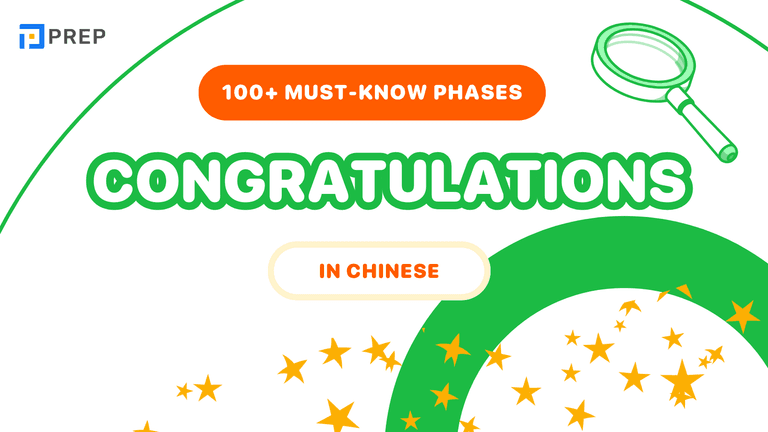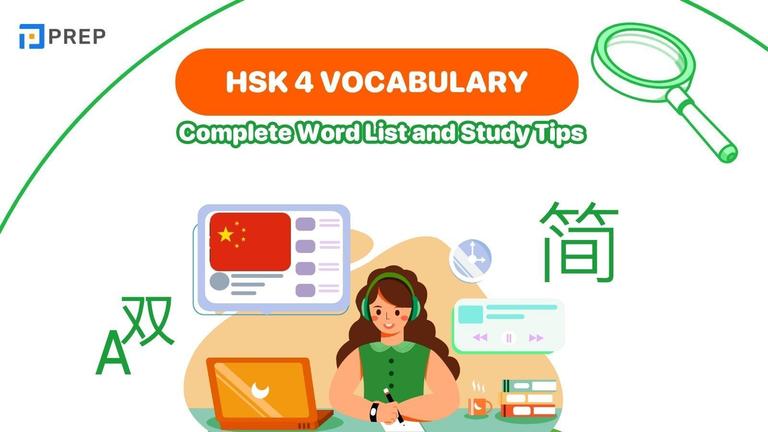School in Chinese: Meaning, Pronunciation and Culture
Curious about how to say “school in Chinese”? This guide breaks down the word 学校 (xuéxiào) with its meaning, characters, and pronunciation. You’ll also discover essential vocabulary, everyday school-related phrases, and the cultural role of schools in Chinese society and art.
I. What Does “school in Chinese” Mean?
The Chinese word for "school" is 学校 (xuéxiào), which serves as the standard term for educational institutions across all levels of Chinese communication. This compound word combines two meaningful characters that together create the complete concept of a place dedicated to learning.
The word 学校 consists of two characters with distinct meanings:
- 学 (xué) = to learn, to study
- 校 (xiào) = school, institution, to check/verify
Together, these characters form 学校 (xuéxiào), literally meaning "learning institution" or "place of study." This etymological structure reflects the Chinese language's logical approach to word formation, where compound meanings build from individual character definitions.
Usage in Spoken and Written Chinese
学校 (xuéxiào) functions as the universal term for "school" in both formal and informal contexts:
- Spoken conversations: Used naturally in daily dialogue about education
- Written texts: Appears in official documents, news articles, and academic writing
- All proficiency levels: From beginner HSK vocabulary to advanced literary texts
- Regional consistency: Recognized and used across all Chinese-speaking regions
Distinguishing from Related School Terms
While 学校 serves as the general term for "school," Chinese uses specific words for different educational levels:
- 大学 (dàxué) = university (literally "big learning")
- 学院 (xuéyuàn) = college, institute, academy
- 中学 (zhōngxué) = secondary school, middle/high school
- 小学 (xiǎoxué) = elementary school, primary school
Understanding these distinctions helps you communicate precisely about different types of educational institutions rather than using the generic 学校 in all contexts. Each term carries specific connotations about the level and type of education provided.
1. How to Pronounce “school in Chinese” in Mandarin
The pronunciation of 学校 follows the pinyin system as xuéxiào, combining two distinct syllables with different tonal patterns that create the complete word.
Tone Pattern: Rising + Falling
- xué (2nd tone): Rising tone that starts mid-level and climbs upward
- xiào (4th tone): Falling tone that drops sharply from high to low
This tone combination creates a distinctive melodic pattern—up then down—that helps distinguish 学校 from other similar-sounding words in Chinese.
IPA Notation: [ɕɥě ɕjâu]
For precise pronunciation guidance:
- [ɕɥě]: The "x" creates a soft "sh" sound with rounded lips for the "ue" glide
- [ɕjâu]: Similar initial sound followed by a "iao" diphthong ending
Pronunciation Tips
- For xué (学):
- Start with your voice at mid-pitch and rise steadily upward
- Round your lips slightly during the "ue" sound
- Maintain clear articulation throughout the rising tone
- For xiào (校):
- Begin at a high pitch and drop decisively downward
- The "iao" ending combines three vowel sounds: i+a+o
- Complete the falling motion without trailing off
2. How to Write “school in Chinese” Characters
The phrase “school in Chinese” is written as 学校 (xuéxiào). Both characters are the same in simplified and traditional Chinese, so learners only need to remember one form.
Character Breakdown
- 学 (xué) – to study, to learn
- Radical: 宀 (roof) → symbolizes a building.
- Component: 子 (child) → represents students or children learning under a roof.
- Together, 学 reflects the image of children studying inside a building.
- 校 (xiào) – school, institution
- Radical: 木 (wood) → historically linked to wooden buildings or tools.
- Component: 交 (to mix, to associate) → represents people gathering and learning together.
- Combined, 校 conveys the idea of a place where people come together to learn.
Learning stroke order is important for proper handwriting and recognition, especially in calligraphy and exams.
- 学 (xué): 8 strokes
- Dot under the roof radical 宀.
- Horizontal line + downward hook (宀).
- Write the 子 component (vertical line, small diagonal strokes, and final horizontal line).
- 校 (xiào): 10 strokes
- Start with the 木 radical: horizontal → vertical → left diagonal → right diagonal.
- Add the 交 component: strokes include a diagonal slash, crossing strokes, and small finishing lines.
Mnemonic tip: Think of 学 as “children under a roof learning” and 校 as “a building (wood) where people (交) gather.”
II. Essential School Vocabulary
Building a comprehensive school vocabulary foundation enables natural conversation about educational experiences, academic activities, and institutional environments. These organized word lists cover the most frequently used terms across different school contexts.
Types of Educational Institutions
|
Chinese |
Pinyin |
English |
Usage Context |
|
幼儿园 |
yòu'éryuán |
Kindergarten |
Ages 3-6 |
|
小学 |
xiǎoxué |
Elementary school |
Primary education |
|
中学 |
zhōngxué |
Middle/High school |
Secondary education |
|
初中 |
chūzhōng |
Junior high school |
Grades 7-9 |
|
高中 |
gāozhōng |
Senior high school |
Grades 10-12 |
|
大学 |
dàxué |
University |
Higher education |
|
学院 |
xuéyuàn |
College/Institute |
Specialized education |
|
职业学校 |
zhíyè xuéxiào |
Vocational school |
Technical training |
School Subjects and Academic Areas
|
Chinese |
Pinyin |
English |
|
语文 |
yǔwén |
Chinese language |
|
英语 |
yīngyǔ |
English |
|
物理 |
wùlǐ |
Physics |
|
生物 |
shēngwù |
Biology |
|
美术 |
měishù |
Art |
|
体育 |
tǐyù |
Physical education |
|
数学 |
shùxué |
Mathematics |
|
历史 |
lìshǐ |
History |
|
化学 |
huàxué |
Chemistry |
|
地理 |
dìlǐ |
Geography |
|
音乐 |
yīnyuè |
Music |
|
计算机 |
jìsuànjī |
Computer science |
School Facilities and Locations
|
Chinese |
Pinyin |
English |
|
教室 |
jiàoshì |
Classroom |
|
实验室 |
shíyànshì |
Laboratory |
|
办公室 |
bàngōngshì |
Office |
|
礼堂 |
lǐtáng |
Auditorium |
|
停车场 |
tíngchēchǎng |
Parking lot |
|
图书馆 |
túshūguǎn |
Library |
|
食堂 |
shítáng |
Cafeteria |
|
操场 |
cāochǎng |
Playground |
|
宿舍 |
sùshè |
Dormitory |
|
医务室 |
yīwùshì |
Infirmary |
People at School
|
Chinese |
Pinyin |
English |
|
学生 |
xuéshēng |
Student |
|
校长 |
xiàozhǎng |
Principal |
|
同学 |
tóngxué |
Classmate |
|
班长 |
bānzhǎng |
Class monitor |
|
清洁工 |
qīngjiégōng |
Janitor |
|
老师 |
lǎoshī |
Teacher |
|
教授 |
jiàoshòu |
Professor |
|
室友 |
shìyǒu |
Roommate |
|
保安 |
bǎo'ān |
Security guard |
|
秘书 |
mìshū |
Secretary |
School Activities and Actions
|
Chinese |
Pinyin |
English |
|
上课 |
shàngkè |
Attend class |
|
做作业 |
zuò zuòyè |
Do homework |
|
学习 |
xuéxí |
Study |
|
预习 |
yùxí |
Preview |
|
请假 |
qǐngjià |
Ask for leave |
|
下课 |
xiàkè |
Class ends |
|
考试 |
kǎoshì |
Take an exam |
|
复习 |
fùxí |
Review |
|
毕业 |
bìyè |
Graduate |
|
迟到 |
chídào |
Be late |
These vocabulary categories provide essential building blocks for school-related conversations, from basic introductions to detailed academic discussions. Each term appears frequently in educational contexts and HSK examinations across different proficiency levels.
III. School Conversations and Daily Communication
Mastering school-related conversations enables natural communication about educational experiences, academic progress, and campus life. These practical dialogue patterns and expressions help you engage confidently in school-focused discussions.
Common Questions About School
询问学校信息 (Asking About School Information)
|
Chinese |
Pinyin |
English |
|
你在哪个学校上学? |
Nǐ zài nǎge xuéxiào shàngxué? |
Which school do you attend? |
|
你学什么专业? |
Nǐ xué shénme zhuānyè? |
What's your major? |
|
你几年级了? |
Nǐ jǐ niánjí le? |
What grade are you in? |
|
你们学校怎么样? |
Nǐmen xuéxiào zěnmeyàng? |
How is your school? |
|
你最喜欢什么课? |
Nǐ zuì xǐhuan shénme kè? |
What's your favorite subject? |
|
今天有几节课? |
Jīntiān yǒu jǐ jié kè? |
How many classes do you have today? |
Daily Communication Sentences - 学校日常对话 (School Daily Conversations)
Arriving at School:
- 我要去学校了 (Wǒ yào qù xuéxiào le) — I'm going to school now
- 你今天早到了 (Nǐ jīntiān zǎo dào le) — You're early today
- 快要迟到了 (Kuài yào chídào le) — We're about to be late
In Class:
- 老师,我有个问题 (Lǎoshī, wǒ yǒu ge wèntí) — Teacher, I have a question
- 我没听懂 (Wǒ méi tīng dǒng) — I didn't understand
- 请再说一遍 (Qǐng zài shuō yí biàn) — Please say it again
After School:
- 作业太多了 (Zuòyè tài duō le) — There's too much homework
- 我们一起去图书馆吧 (Wǒmen yìqǐ qù túshūguǎn ba) — Let's go to the library together
- 明天有考试 (Míngtiān yǒu kǎoshì) — There's an exam tomorrow
School-Related Idioms and Expressions - 成语和常用表达 (Idioms and Common Expressions)
|
Chinese |
Pinyin |
English |
Usage Context |
|
书山有路勤为径 |
shūshān yǒu lù qín wéi jìng |
Diligence is the path up the mountain of books |
Encouraging hard study |
|
学而时习之 |
xué ér shí xí zhī |
Learn and review regularly |
Importance of consistent study |
|
百年树人 |
bǎinián shùrén |
It takes a hundred years to educate a person |
Long-term nature of education |
|
师父领进门,修行在个人 |
shīfu lǐng jìn mén, xiūxíng zài gèrén |
The teacher opens the door, practice depends on the individual |
Personal responsibility in learning |
Modern School Expressions:
- 补课 (bǔkè) — Make-up classes, tutoring
- 刷题 (shuātí) — Practice lots of exam questions
- 学霸 (xuébà) — Academic achiever, top student (slang)
- 学渣 (xuézhā) — Poor student (informal/slang)
- 熬夜学习 (áoyè xuéxí) — Stay up late studying
Complete Conversation Example:
- A: 你今天在学校怎么样?(How was school today?)
- B: 还不错,不过数学考试很难。(Not bad, but the math exam was very hard.)
- A: 你觉得能考多少分?(What score do you think you'll get?)
- B: 不太确定,希望能及格。(Not sure, I hope I can pass.)
- A: 别担心,你一直很努力学习。(Don't worry, you've been studying hard.)
These practical expressions and conversation patterns provide the foundation for natural school-related communication in Chinese, from casual student interactions to more formal academic discussions.
IV. Cultural and Artistic Views of “school in Chinese”
The concept of “school in Chinese” (学校 xuéxiào) is not only a place for learning but also a cultural symbol that reflects values, traditions, and artistic expression in Chinese society.
In Chinese Culture and Society
- Symbol of knowledge and discipline: Schools are viewed as the foundation of personal growth and social progress. The word 学校 often represents respect for education and the pursuit of wisdom.
- Historical influence: Since Confucian times, education has been central to Chinese values, and 学校 embodies this cultural emphasis on learning and self-improvement.
In Literature and Poetry
- Classical texts frequently highlight 学 (learning) as a lifelong pursuit.
- Phrases like 学而不厌 (never tire of learning) or 活到老学到老 (live and learn) reinforce the cultural weight attached to schools and education.
In Calligraphy and Art
- The characters 学 and 校 are often written in calligraphy to decorate study rooms, libraries, or classrooms as a reminder of diligence and knowledge.
- 学 (study/learn) is especially popular in wall scrolls or artwork, symbolizing wisdom and aspiration.
In Modern Design and Tattoos
- Some learners or artists use 学 or 校 as design elements in tattoos or logos, associating them with knowledge, discipline, and growth.
- However, cultural sensitivity is important—these characters should be used with awareness of their deep educational meaning.
In short, “school in Chinese” represents more than a word—it is a cultural icon tied to China’s long-standing traditions of respect for education and artistic expression.
Mastering how to say and use “school in Chinese” goes beyond memorizing the word 学校 (xuéxiào). It’s about understanding its meaning, writing the characters correctly, pronouncing it with the right tones, and applying it naturally in real-life communication. From everyday conversations to cultural insights, learning “school in Chinese” opens the door to essential vocabulary and deeper appreciation of education in Chinese society.
Keep building your confidence with PREP’s step-by-step lessons, vocabulary guides, and practice tools—designed to help you learn Mandarin effectively, one meaningful word at a time.

Hi I'm Chloe, and I am currently serving as an Product Content Administrator at Prep Education. With over five years of experience in independent online IELTS study and exam preparation, I am confident in my ability to support learners in achieving their highest possible scores.
Comment
Premium content
View allPersonalized roadmap
Most read












